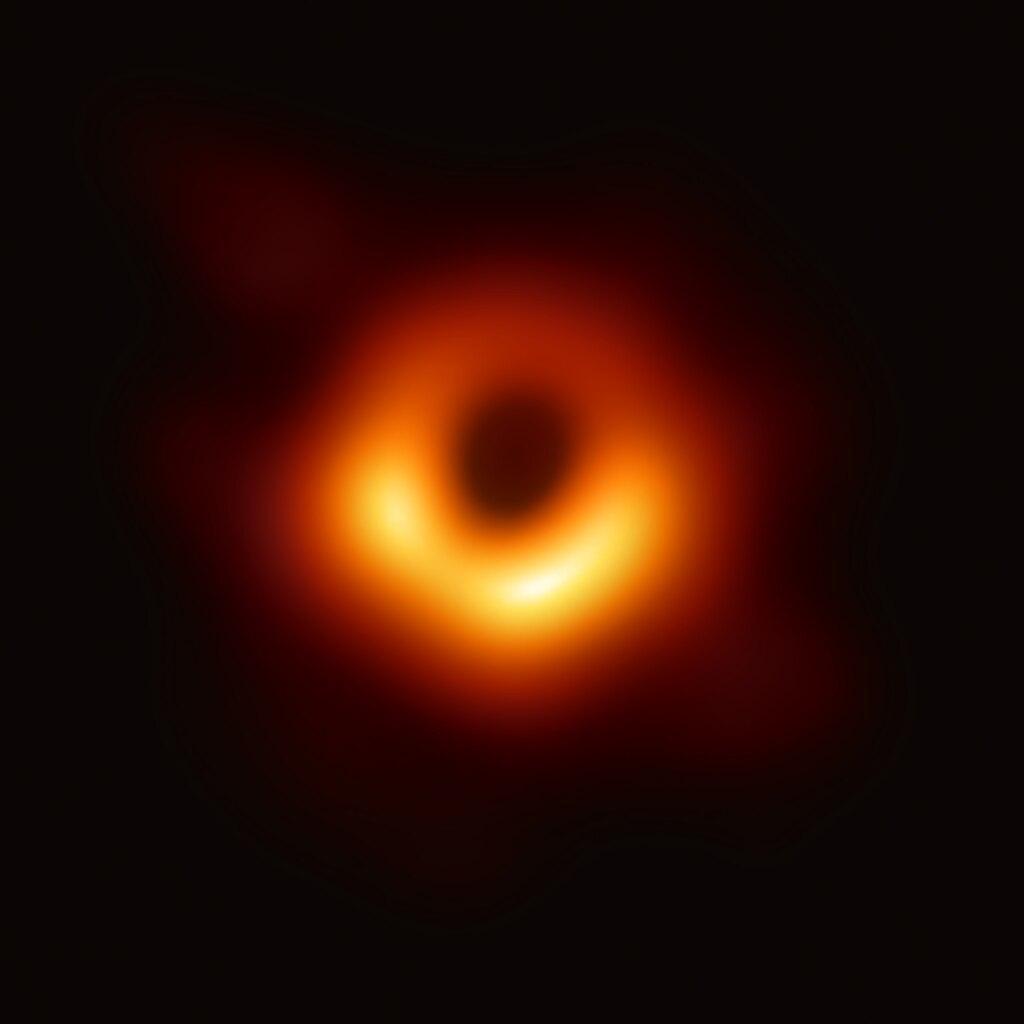Formed Without Stars: The Mystery About the Universe’s First Black Holes May Be Solved
Nearly two decades ago, Astronomer Priyamvada Natarajan and her team made a bold prediction: the oldest black holes in the universe formed without the help of dying stars.
While other physicists in Natarajan’s field initially criticized her theory, recent observations appear to support the claim. But if the first black holes in our universe didn’t form in the wake of dying stars, how did they come into existence?
Einstein Predicts the Existence of Black Holes
Ever since Albert Einstein’s general theory of relativity predicted the existence of black holes in 1916, the phenomenon has been heavily studied by numerous generations of astrophysicists.

Source: Wikimedia
Finally, researchers detected the first black hole, Cygnus X-1, almost six decades later in 1971. However, it would take almost another fifty years before the first photograph of a black hole was captured.
Black Hole Research
Over the past century, research into black holes has accelerated at an unprecedented rate, shedding insight into the nature of these celestial phenomena.

Source: Freepik
While researchers admit they still know very little in the grand scheme of things, astronomers are slowly gaining an understanding of black holes. They even discovered a collection of enormous black holes that appeared to have expanded much faster than scientists once thought possible.
Cosmic Biologist
For the majority of her career as an astronomer, Priyamvada Natarajan has been at the forefront of black hole study. She has extensively studied the life of many enigmatic black holes, celestial phenomena that trap all light within their grasp.

Source: @SheerPriya/X
Recently, the astronomer sat down with Scientific American to discuss the behavior of black holes and her theory that they can come into existence without the death of a star.
Black Holes Can Form Without a Dying Star
The traditional theory of black holes suggests they form following an enormous stellar explosion and continue to grow as they consume nearby gas reservoirs.

Source: Wikimedia
Natarajan, currently an astrophysicist at Yale, was part of a team that, in 2006, proposed a shocking claim: “Disks of gas could collapse directly into abnormally massive baby black holes without ever forming a star.”
Astrophysicist Aims to Prove Her Theory
Over the past few decades, verifying her theory has been challenging due to the complexity of black holes. However, an observation appeared to verify Natarajan’s long-standing claim last year.

Source: Wikimedia
In 2023, “a joint observation by the James Webb Space Telescope (JWST) and the Chandra X-ray Observatory spotted a distant, radiant black hole that appears to verify Natarajan’s prediction at last,” wrote Scientific American.
Natarajan Begins by Explaining Initial Observations
During her conversation with Scientific American, Natarajan first explained her original theory of “direct-collapse black holes,” which went against the norm. She claims around two decades ago, they discovered a group of black holes over a billion times the mass of the sun.

Source: Wikimedia
“Given the rate at which we know black holes like to feed, there just wasn’t enough time to take the tiny seeds you’d get from the first stars exploding and grow them to these behemoth black holes,” she said.
Supermassive Blackholes in the Early Universe
After further investigation, Natarajan and her team discovered an entire population of supermassive black holes that appeared during the universe’s early stages. However, this left them with quite a problem.

Source: Wikimedia
The Yale astrophysicist states, “Some people began exploring whether there might be ways for black holes to feed much faster than the known limit. Theoretically, there are, but we have yet to see convincing observational indications of this.”
Astrophysicist Explains Her Black Hole Seed Theory
Natarajan explained, “So I started wondering, what if we just started with larger seeds? My team and I realized that if a gas disk is radiated by stars from a nearby galaxy, it could circumvent the star-formation process and collapse directly into a black hole.”

Source: Wikimedia
She continued, “This direct-collapse black hole would be much larger at birth—1,000 to 100,000 times the mass of the sun. That black hole could then merge with a nearby galaxy and easily grow to the size we see.”
Evidence to Support Her Claim
Last year, Natarajan claims she received a call from her colleague “astrophysicist Akos Bogdan, who had seen the Chandra observations of galaxies behind the Abell 2744 lens.”

Source: Freepik
“By complete coincidence, the spectrum from one galaxy matched unbelievably well with the prediction plots we made in 2017 of a hypothetical detection. It was gobsmacking. It checks off every predicted property. It’s very compelling evidence that direct-collapse black holes do form in the early universe. This is no longer just a speculation,” she said.
Black Hole Seeds
Speaking on the recent observation, Raffaella Schneider, an astrophysicist at Sapienza University of Rome, said, “It’s definitely a very strong case in favor of these heavy black hole seeds.”

Source: Freepik
He continued, “[Natarajan] having proposed this idea really helped the community to enlarge our view on the different possibilities that can occur.”
What’s Next for Natarajan?
While Natarajan is excited about the recent discovery, she admits there is a lot more work to do. According to the astrophysicist, there could be numerous other ways in which black hole seeds could form.

Source: Freepik
“That’s what I’m moving onto next: trying to uncover other pathways and what their unique observational signatures could be. It opens a whole Pandora’s box of exciting questions,” she said.
